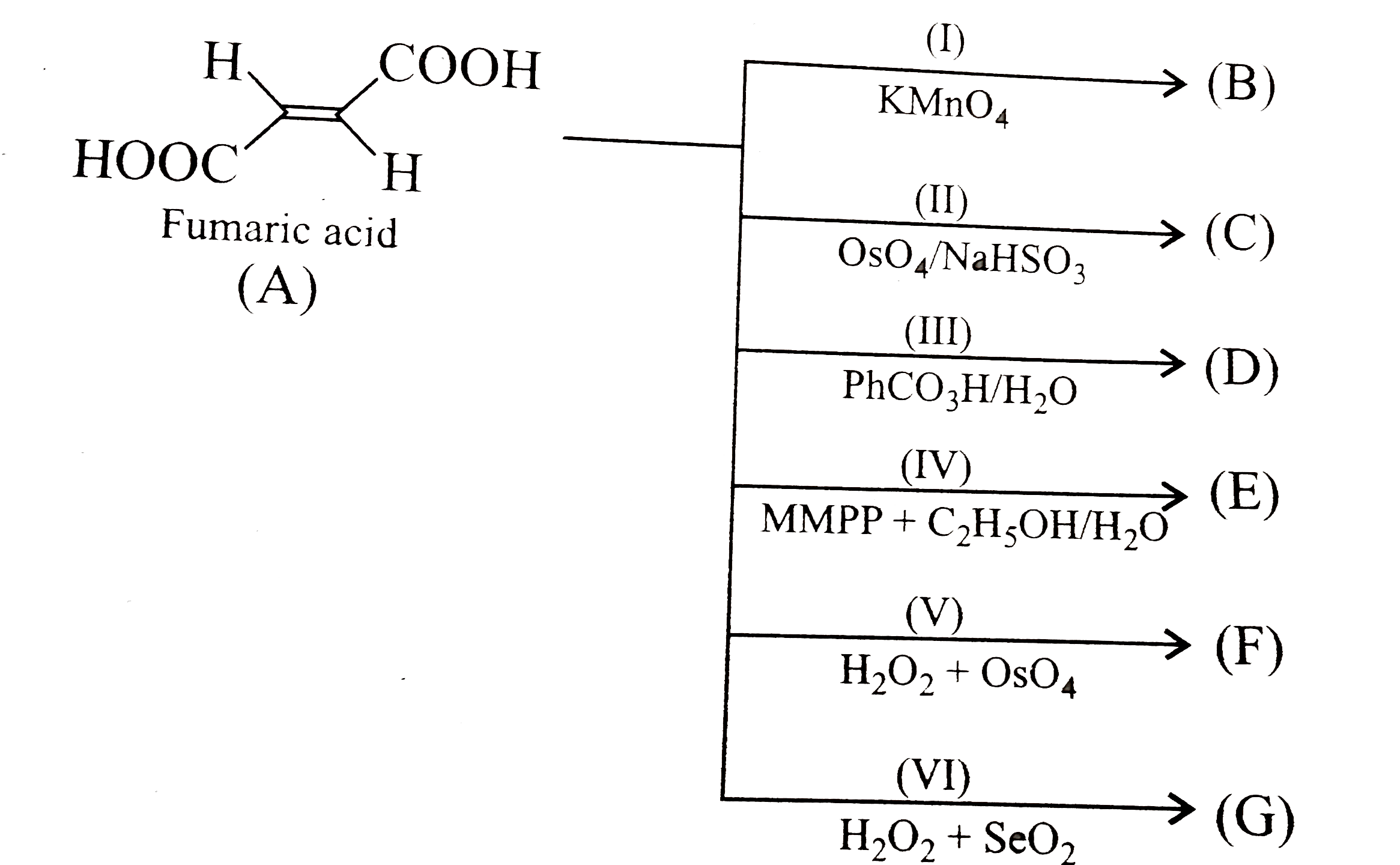The optically active tartaric acid is named as D−(+)− tartaric acid because it has a positive
Optical rotation and is derived from D-glucose.
pH in organic solvent.
Optical rotation and is derived from D−(+)− glyceral-dehyde.
Optical rotation when substituted by deuterium.
The correct Answer is:C
To solve the question regarding why the optically active tartaric acid is named D−(+)− tartaric acid, we can break down the reasoning step by step.
1. Understanding Tartaric Acid:
- Tartaric acid is a naturally occurring organic acid that has two carboxylic acid groups (-COOH) and multiple hydroxyl groups (-OH). It is a chiral molecule, meaning it has non-superimposable mirror images (enantiomers).
2. Optical Activity:
- Optical activity refers to the ability of a compound to rotate plane-polarized light. The direction of this rotation can be either to the right (clockwise) or to the left (counterclockwise). Compounds that rotate light to the right are designated as (+) or "dextrorotatory," while those that rotate light to the left are designated as (-) or "levorotatory."
3. D-Configuration:
- The "D" in D−(+)− tartaric acid refers to the configuration of the molecule based on the reference compound D-glyceraldehyde. In D-glyceraldehyde, the hydroxyl group (-OH) on the penultimate carbon (the second last carbon) is on the right side when the molecule is drawn in a Fischer projection.
4. Positive Optical Rotation:
- The (+) sign indicates that the compound has a positive optical rotation, meaning it rotates plane-polarized light to the right. This is a characteristic of the specific stereoisomer of tartaric acid that is derived from D-glyceraldehyde.
5. Conclusion:
- Therefore, D−(+)− tartaric acid is named so because it is derived from D-glyceraldehyde and exhibits positive optical rotation.
Final Answer:
The correct answer is that D−(+)− tartaric acid is named because it has a positive optical rotation and is derived from D-glyceraldehyde.
---
- Tartaric acid is a naturally occurring organic acid that has two carboxylic acid groups (-COOH) and multiple hydroxyl groups (-OH). It is a chiral molecule, meaning it has non-superimposable mirror images (enantiomers).
- Optical activity refers to the ability of a compound to rotate plane-polarized light. The direction of this rotation can be either to the right (clockwise) or to the left (counterclockwise). Compounds that rotate light to the right are designated as (+) or "dextrorotatory," while those that rotate light to the left are designated as (-) or "levorotatory."
- The "D" in D−(+)− tartaric acid refers to the configuration of the molecule based on the reference compound D-glyceraldehyde. In D-glyceraldehyde, the hydroxyl group (-OH) on the penultimate carbon (the second last carbon) is on the right side when the molecule is drawn in a Fischer projection.
- The (+) sign indicates that the compound has a positive optical rotation, meaning it rotates plane-polarized light to the right. This is a characteristic of the specific stereoisomer of tartaric acid that is derived from D-glyceraldehyde.
- Therefore, D−(+)− tartaric acid is named so because it is derived from D-glyceraldehyde and exhibits positive optical rotation.
The correct answer is that D−(+)− tartaric acid is named because it has a positive optical rotation and is derived from D-glyceraldehyde.
Topper's Solved these Questions
- ISOMERISMBOOK - CENGAGE CHEMISTRY ENGLISHCHAPTER - ISOMERISMEXERCISE - Assertion-Reasoning Type (Exercise)
5 Videos
- ISOMERISMBOOK - CENGAGE CHEMISTRY ENGLISHCHAPTER - ISOMERISMEXERCISE - Fill in the blanks (Exercise)
3 Videos
- ISOMERISMBOOK - CENGAGE CHEMISTRY ENGLISHCHAPTER - ISOMERISMEXERCISE - Single correct answer type
13 Videos
- IONIC EQUILIBRIUMBOOK - CENGAGE CHEMISTRY ENGLISHCHAPTER - IONIC EQUILIBRIUMEXERCISE - Archives Subjective
28 Videos
- NCERT BASED EXERCISEBOOK - CENGAGE CHEMISTRY ENGLISHCHAPTER - NCERT BASED EXERCISEEXERCISE - Chemical Equilibrium
73 Videos
Similar Questions
Knowledge Check
Number of optically active tartaric acid is/are possible :
A1B2C3D4

(±) -Tartaric acid is formed in :
View SolutionMeso-tartaric acid and d-tartaric acid are
View SolutionThe number of optically inactive stereoisomers possible for tartaric acid.
View SolutionLysine is an essential amino acid because
View SolutionThe most stable form of meso-tartaric acid is
View SolutionIn the following questions, a statement of assertion (A) is following by a statement of reason (R )
A : The number of optically active isomers of tartaric acid is three though it contains two asymmetric carbons.
R: One of the optical isomers has a centre of symmetry..
View SolutionPhenol is acidic , because :
View Solution

